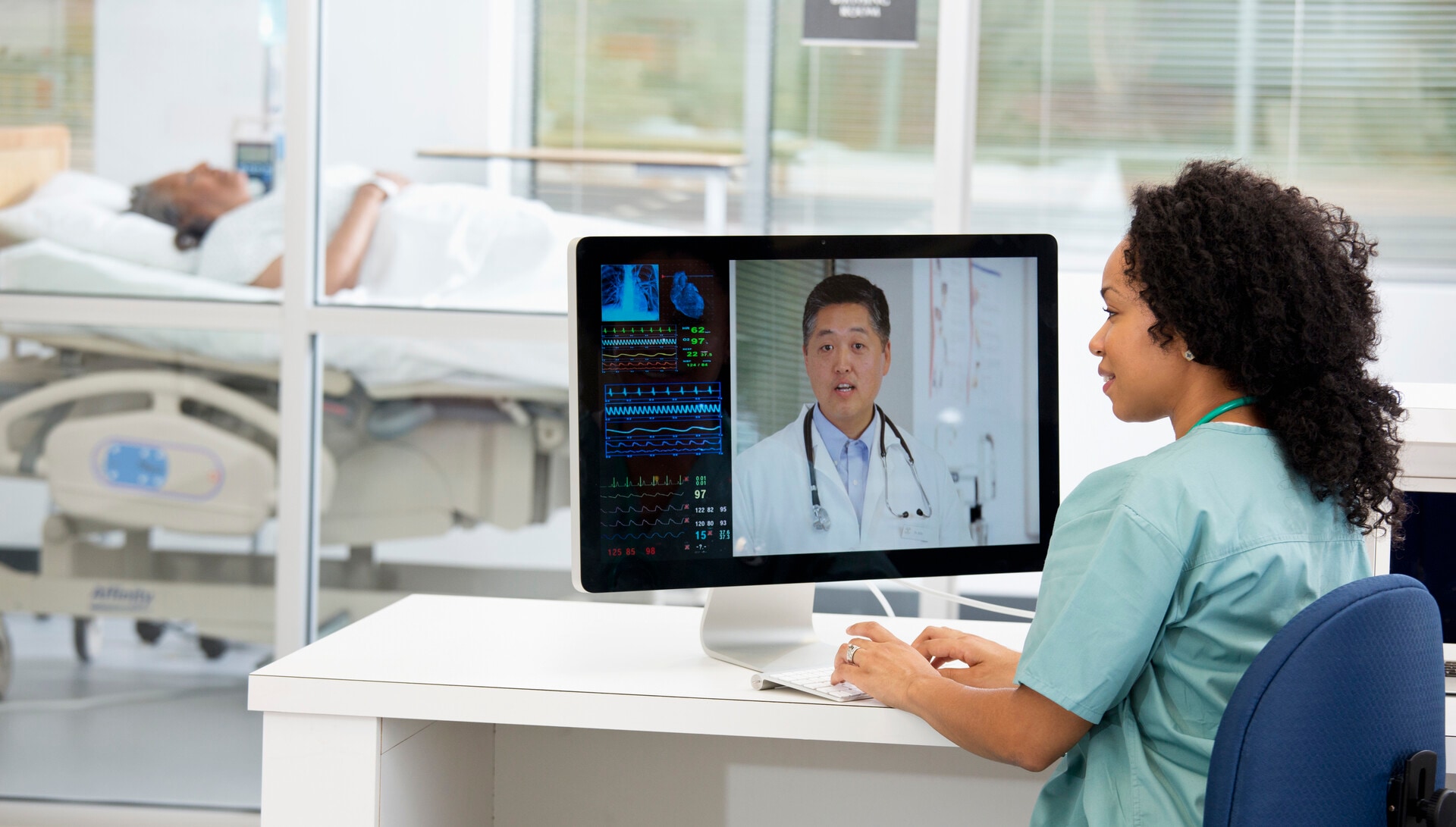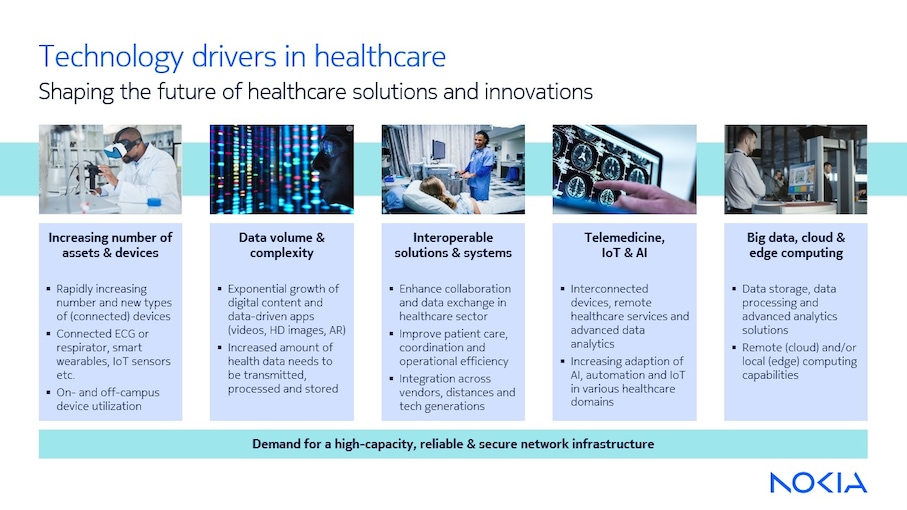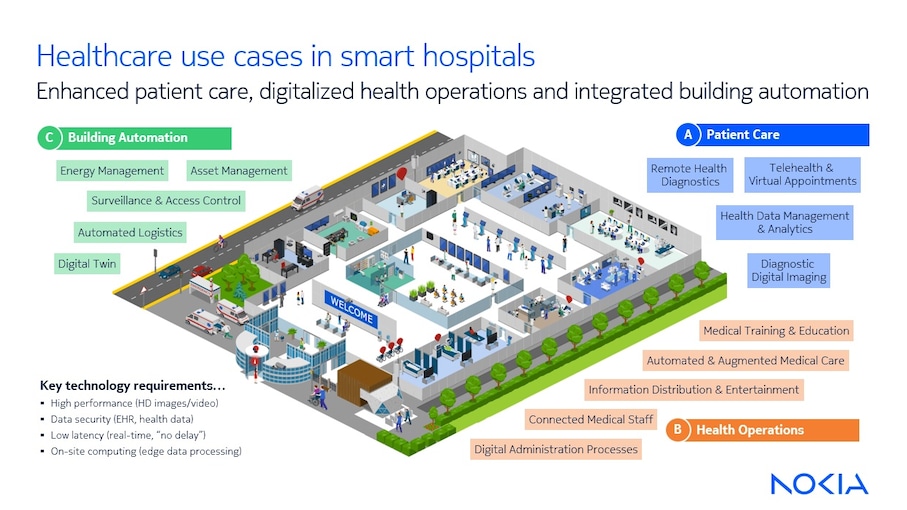eHealth: Driving intelligent healthcare


“Health is wealth.” The famous proverb that has always held true and assumes even greater significance, today, as a host of manmade and environmental factors take a heavy toll on physical and mental well-being. The demand for effective and affordable healthcare is on the rise and more so in the aftermath of the COVID-19 pandemic. Health services across the world are grappling with multiple challenges which include providing timely access to medical aid and infrastructure, low-cost medicines, and trained staff. Add to it the rather expensive and time-consuming process of drug discovery, trials and certification.
However, rapid advancements in information and communication technology (ICT) have led to hopes of innovative digital solutions that would transform the sector, ushering in a new age of intelligent and connected healthcare. Digital health or eHealth has been a hot topic in the ICT space and among medical professionals. The Organisation for Economic Co-operation and Development (OECD) in a recent report stressed on the development of digital infrastructure that could strengthen resiliency in healthcare and help anticipate future threats and counter them through robust and equitable deployment of cutting-edge technologies.
“However, digitalization and technology can help to address these difficulties. There is a recent focus on telehealth and remote healthcare, artificial intelligence (AI) for diagnostics, advanced patient monitoring and expanded data analytics – all these innovations are making a difference,” he adds.
What is eHealth?
The first fledgling steps towards digitalization in healthcare started around a decade ago in the form of basic electronic records, limited use of computers and teleconsultation. Since then, we have entered a totally different dimension where smart technologies and mission critical networks are making their way into every aspect of medical practice.
The World Health Organization (WHO) defines eHealth as the as the cost-effective and secure use of information and communications technologies in support of health and health-related fields, including health-care services, health surveillance, health literature, and health education, knowledge, and research.
With the proliferation of the internet and mobile technology and the latest connectivity standards like 4.9G/LTE and 5G, the health sector is witnessing the integration of state-of-the-art solutions. From artificial intelligence, machine learning (AI/ML), the Internet of Things (IoT), augmented and virtual reality (AR/VR) to blockchain, robotics, wearables and big data. The coalescing of such advanced technologies could potentially enable personalized medicine, remote patient monitoring, predictive analytics for early disease detection, precision diagnostics and treatment, improved healthcare management and delivery systems.

Understanding Healthcare 4.0
Healthcare 4.0 can be understood as the “Industry 4.0” paradigm for the healthcare and medical sector. It summarizes the ongoing and upcoming digitalization and transformation of the healthcare industry with the ultimate target to provide better patient care and experience, optimize and lower operational costs and consider the latest research and education innovations to shape our world.
Healthcare 4.0 will offer a plethora of applications. On-site and remote patient monitoring and digital diagnostics with HD videos or imaging, connected medical staff, augmented medical support, automated logistics, asset management, digital twins at hospitals, etc. It even goes beyond hospitals and medical centers to labs and research facilities as well as connected ambulances and temporary care centers that are important stakeholders of the whole Healthcare 4.0 ecosystem.
“Considering the Healthcare 4.0 use cases, they share some technology and solution requirements in common, i.e. high performance for HD image and video transmission and AR/VR content, low latency to enable real-time collaboration between medical sites and remote experts and patients, data security to keep the health data and patient records safe and edge computing capabilities to reduce the bandwidth need and enable innovative applications,” says Lorena Gomez Gaviria, Business Incubation Manager for Digital Industries at Nokia.
To make Healthcare 4.0 a reality, it is imperative that there is a confluence of various network infrastructure technologies. Starting from the outside, there is a need for high-capacity optical fiber networks that connect the various medical sites or campus buildings and build the backbone of most of the use cases mentioned earlier. Inside the buildings or campuses, the continuation of a passive optical network to the various end points in the medical departments ensures that a broad range of services can leverage the high-capacity and secure network. The so-called “last mile” can either be done with classical LAN networks for stationary machines or use a 5G private wireless campus network to connect mobile entities such as logistics vehicles, medical tablets, or temporary care machines.
Besides the network infrastructure layers, device, machine and module vendors and the application and software providers will be essential to make the end-to-end use cases work. Like Industry 4.0, Healthcare 4.0 is a full-value chain and ecosystem play, so a continuous collaboration between hardware, software and service and system integration companies is a key requirement.

Aspects to consider before rollout
When rolling out a Healthcare 4.0 digitalization or transformation program, there are some points to consider.
First, the digitalization services and solutions should be trialed in a small-scale proof-of-concept or pilot project. The purpose of this “start small, grow big” strategy is to first understand the value add and business case of the services and technology and finetune the planning, deployment, and operation scenario before going for full-scale deployment. Maybe there is a need to change technologies, add more use cases or take another digitalization path to succeed. This also ensures a solid three-to-five-year investment plan and unlocks a fast, but wise start into digitalization.
Second, digitalization doesn’t only come with technology. It is a change and transformation process among people, organizations, processes, and cultures. This should be considered when automating processes that have been conducted manually so far. Such a transformation takes 6-12 months and might be supported by consulting or change management experts.
Third, being cognizant of the need for solution partners and ecosystems. Bringing in new technology would involve the participation of multiple vendors and an ecosystem comprising of hardware, software and service companies. Some of them will be new to the business while others established market players. By joining forces each participant can benefit from innovation, knowledge, and experience. The presence of certified system integrators also creates more trust within customers and a faster rate of adoption.
Making eHealth sustainable
Like many other industries, the healthcare sector uses significant energy and has a massive carbon footprint. Medical Heating, Ventilation, and Air Conditioning (HVAC) systems, lightning and energy for ER rooms, MRT and X-ray machines and other high-tech equipment as well as special disinfection rooms and laboratories are just few examples of the sources that generate enormous amount of CO2.
The digitalization and automation of healthcare processes lowers carbon footprint by reducing energy and optimizing maintenance and cleaning cycles. Digitalization avoids recurring patient visits to hospitals or doctors due to remote healthcare and medication. Hence less usage of the healthcare system contributes positively to the industry’s green credentials.
Overall, digitalization can promote environmental sustainability in healthcare by cutting down on paper usage, minimizing transportation-related emissions, optimizing resource utilization, and enhancing energy efficiency. By embracing digital technologies, the sector can contribute to a greener future while delivering quality care to patients.
The future of digital health
One of the main goals of healthcare digitalization is to go beyond doctors and hospitals and focus more on patient wellness. eHealth will not only boost access to quality medical care but also make it cheaper to avail.
The introduction of the latest digital tools, practises and future connectivity standards like 5G-Advanced and the subsequent step-up to 6G and even the metaverse will redefine how we perceive healthcare and make it reliable, ethical, safe, equitable and most crucially, sustainable.
Currently we are at the beginning of digitalizing the healthcare sector. This means that hospitals are in the process of upgrading their infrastructure with better IP/optical backbone networks, superior Wi-Fi, and private wireless connectivity. They are also connecting existing machines to gather data for analytics, automating logistics and training staff to use advanced systems.
“We are still a few years away from more innovative use cases that would usher the healthcare industry into the next transformation stage. Reforms in healthcare processes, organization, training and education are key to make innovation work. But the good news is that the realization is there, and the industry is taking the right measures” says Hainzel.
Going green with digital healthcare
- Paperless systems
- Telemedicine
- Virtual care and remote patient monitoring
- Smart building technologies
- Cloud computing and virtualization
- Inventory management systems
- Intelligent data analytics
- Virtual collaboration and knowledge sharing
Read more

Industry vertical
Healthcare

Case study
Nokia and UPMC collaborate for health IT
About Nokia
At Nokia, we create technology that helps the world act together.
As a B2B technology innovation leader, we are pioneering networks that sense, think, and act by leveraging our work across mobile, fixed and cloud networks. In addition, we create value with intellectual property and long-term research, led by the award-winning Nokia Bell Labs.
Service providers, enterprises and partners worldwide trust Nokia to deliver secure, reliable and sustainable networks today – and work with us to create the digital services and applications of the future.
Media inquiries
Nokia Communications, Corporate
Email: Press.Services@nokia.com
Follow us on social media
LinkedIn Twitter Instagram Facebook YouTube





